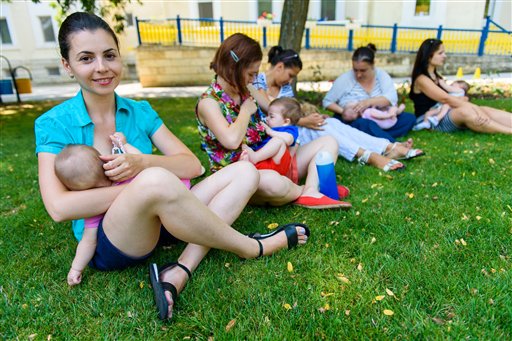The U.S. Department of Agriculture has spent nearly $3 million on "breastfeeding peer counselors" so far this year.
The funding is part of the Woman, Infant, and Children’s (WIC) program that trains women to talk to other women about breastfeeding.
In fiscal year 2016 the agency has spent $2,869,595 for counselors to address "barriers" to breastfeeding. A total of 25 grants were issued across the country, ranging in costs from $25,500 to $490,764.
"The use of breastfeeding peer counselors adds a critical dimension to WIC’s efforts to help women initiate and continue breastfeeding," the USDA said on its "Loving Support" website. "WIC breastfeeding peer counselors provide a valuable service to their communities, addressing the barriers to breastfeeding by offering breastfeeding education, support, and role modeling."
In order to become a breastfeeding peer counselor a woman must be a mother with "personal experience with breastfeeding," and go through a lengthy training process.
"Peer counselors reinforce breastfeeding recommendations in a socially and culturally appropriate context, and promote breastfeeding as an important element in the healthy development of the mother and baby," the USDA said.
The "Loving Support Through Peer Counseling: A Journey Together" training program includes handouts with inspirational travel quotes and instructions on how to ask open questions about breastfeeding.
For example, instead of asking "Are you going to breastfeed or formula feed your baby?" a peer counselor would ask, "What have you heard about breastfeeding?"
Instead of asking "Are you worried you aren’t making enough milk?" the peer counselor would ask "How do you feel about your milk production?"
The training also provides tips to give "affirming responses" to new mothers. For instance, if a new mom says, "My breasts are too small. The baby will starve," the peer counselor would say, "I felt that way, too," or "Most women worry about the size of their breasts."
The handouts also include a section on "Babies Crying," which explains that "babies cry for lots of reasons."
